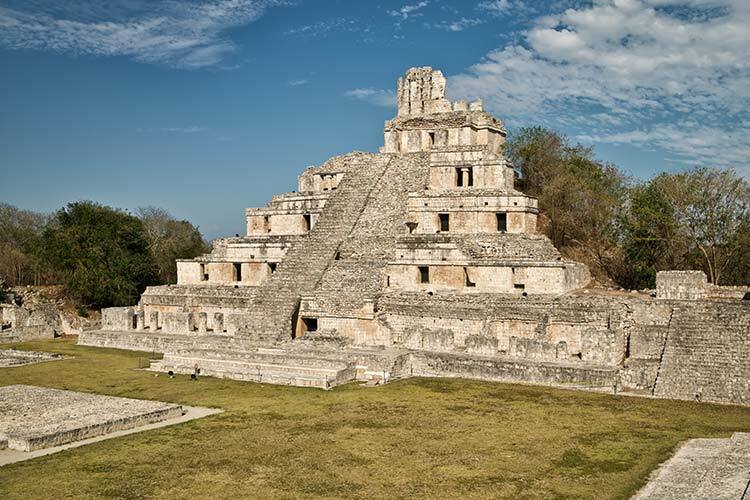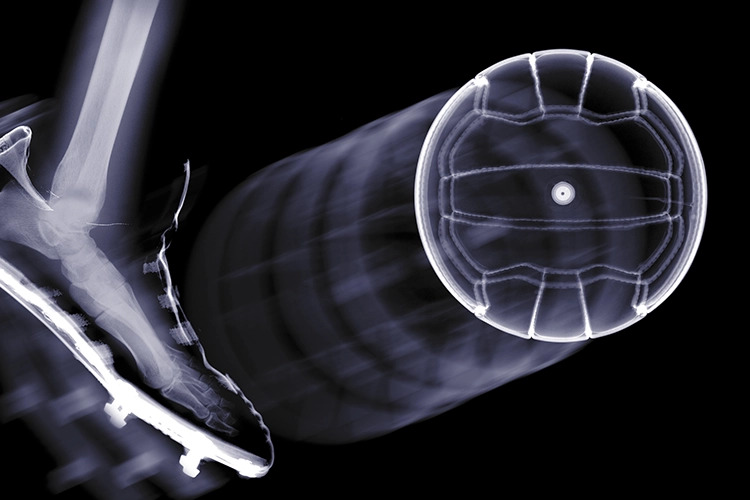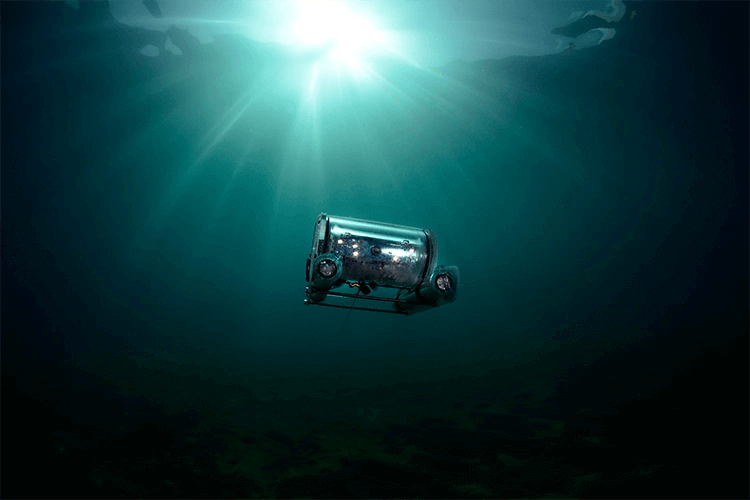By David I. Ibarra-Zarate, Luz María Alonso-Valerdi, Gustavo Navas-Reascos y Norberto E. Naal-Ruiz
Edzná is an ancient Maya site in Campeche that hides a surprising secret: its structures appear designed to amplify and direct sound.
Recent research has revealed that the Mayans were knowledgeable in mathematics, astronomy, and acoustics. This discovery transports us to a past where architecture and sound intertwined to create unique experiences.
Imagine standing in the center of an ancient Maya city, surrounded by majestic temples and open plazas. Suddenly, a clear and powerful voice resonates through the space, carrying words of wisdom or ceremonial announcements to all present.
This research explores whether these architectural structures were designed to exploit their acoustic properties.
Through practical measurements, these spaces’ ceremonial and social uses are revealed through sound.
Edzná: An Outdoor Laboratory
Edzná is known for its complex architecture and urban planning. Its name means “House of the Itzáes” —meaning water sorcerers— and it was an archaeological site that flourished between 600 and 1200 A.D.
Famous for its advanced hydraulic systems, this city stands out for its acoustic innovation. Recent research focused on three main locations: the Main Plaza, the Great Acropolis, and the Small Acropolis.
Archaeoacoustics is the discipline that combines acoustics, anthropology, and archaeology to study how sound behaved in ancient sites.
To understand the acoustic properties of Edzná, measurements were taken at key points in the area using equipment to generate sound impulses. These measurements followed international standards (ISO 3382-1:2009) to ensure the accuracy of the results.
Parameters such as Reverberation Time (RT20), which measures how long it takes for sound to decrease by 60 decibels after the sound source has stopped, and Acoustic Clarity, which measures how intelligible or defined sounds are in space—especially concerning spoken word (C50) and music (C80)—were evaluated.
This allows for a better understanding of how sound behaved in this place and the possible uses of these spaces.
Acoustic Findings
The measurements revealed significantly high reverberation times (RT20) in the Main Plaza, averaging 2.2 seconds, suggesting its use for large events where sound needed to propagate widely.
The high reverberation times would have allowed sound to be heard clearly throughout the plaza.
This can be inferred from the clarity results, which showed good levels of C50 and C80, parameters that measure the intelligibility of speech and music, respectively. This suggests that Nohochná, part of the Main Plaza and features steps, was possibly used as a large grandstand where people could participate in mass events.
The Great and Small Acropolis exhibited lower reverberation times, around 1.2 seconds, suitable for more intimate events. The Great Acropolis is a more private space where Maya leaders may have held fewer public meetings or rituals, benefiting from acoustics that favored clarity.
Meanwhile, the Small Acropolis was likely used as a resting area.
Echoes of History
Acoustics in archaeology offers a unique window into the past, allowing a better understanding of how the Maya interacted with their environment and each other.
Exploring the acoustic properties of Edzná reveals that the ancient Maya were knowledgeable in architecture, engineering, and acoustics. These findings invite further exploration of the mysteries of their constructions.
Archaeoacoustics, with its interdisciplinary approach, helps us understand the sound experiences of our ancestors and gain better insight into their culture and way of life.
Thus, every echo in Edzná connects to a rich and resonant story, where sound may have been as important as the stones that formed its structures.
This study opens a window to the past and lays a foundation for future research.
The researchers conducted additional measurements to enhance the accuracy of the results. Moreover, they simulated the original acoustic conditions by characterizing materials like Maya stucco, which could provide an even more detailed understanding of what Edzná sounded like at its peak.
References
- INAH, “Edzna”. (Accessed Nov. 17, 2022).
- A. Benavides Castillo, Edzná: A Pre-Columbian City in Campeche. México: Instituto Nacional de Antropologia e Historia, 1997.
- A. B. Castillo, La arquitectura precolombina de Edzná, Campeche, México. San Francisco de Campeche, 2014.
- G. Navas-Reascos, N. E. Naal-Ruiz, L. M. Alonso-Valerdi, and D. I. Ibarra-Zarate, “Acoustic measurements of Edzna: A Mayan archaeological place in Mexico,” J. Archaeol. Sci. Reports, vol. 52, no. June, p. 104269, 2023.
- International Organization for Standardization, “ISO 3382-1:2009 Measurement of room acoustic parameters — Part 1: Performance spaces.” Geneva, Switzerland, 2009.
- G. Navas-Reascos, L. M. Alonso-Valerdi, and D. I. Ibarra-Zarate, “Archaeoacoustics around the World: A Literature Review (2016–2022),” Appl. Sci., vol. 13, no. 4, p. 2361, Feb. 2023.
Authors
David Ibarra-Zárate. Engineer in communications and electronics from the Escuela Superior de Ingeniería Mecánica y Eléctrica (Unidad Culhuacán) of the Instituto Politécnico Nacional, Mexico City. He holds a master’s and doctorate in acoustics from the Universidad Politécnica de Madrid and the Consejo Superior de Investigaciones Científicas, Spain. He is currently a professor and researcher at Tecnológico de Monterrey. He has worked on other Archaeoacoustic projects, including the archaeological zone of Peralta in Guanajuato.
Luz María Alonso Valerdi. She completed her professional studies at the Facultad de Ciencias de la Electrónica of the Benemérita Universidad Autónoma de Puebla (BUAP). She earned her master’s in bioelectronics at the Centro de Investigación y Estudios Avanzados of the Instituto Politécnico Nacional and her doctorate in computer science and electronic engineering from the University of Essex, UK. Over the last 15 years, she has supervised around 16 undergraduate and graduate theses at the University of Essex, BUAP, Instituto Tecnológico del Estado de Puebla, Universidad de Guadalajara, and Tecnológico de Monterrey. She is currently a professor and researcher in neuroengineering at Tec de Monterrey.
Gustavo Navas Reascos. Engineer in sound and acoustics from the Universidad de las Américas (Ecuador). He holds two master’s degrees in engineering, specializing in quality systems and productivity, and engineering sciences from Tecnológico de Monterrey. He has served as General Technical Coordinator at the National Institute for Educational Evaluation in Ecuador and has experience in acoustic projects with Lambda Acoustics Laboratories. He has also taught classes at the Universidad de las Américas and the Instituto de Artes Visuales in Quito. He is in his final semester of a Ph.D. in engineering sciences at Tecnológico de Monterrey.
Norberto E. Naal Ruiz. Ph.D. candidate in engineering sciences at the School of Engineering and Sciences at Tecnológico de Monterrey. His doctoral thesis is on anxiety reduction with soundscapes in 3D audio format and electrophysiological indicators. He is a researcher in the Neurotechs and Acoustic Innovation Research groups and an adjunct professor in cognitive neuroscience and sound instrument design at the School of Humanities and Education. He has published over 10 research articles and worked as an audio engineer assistant at Latin Power Music and as an acoustic consultant for Hariacoustics R&D.














